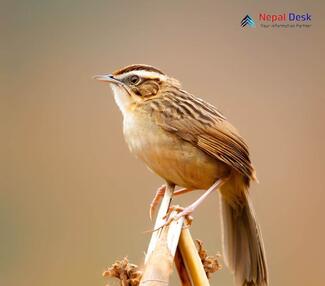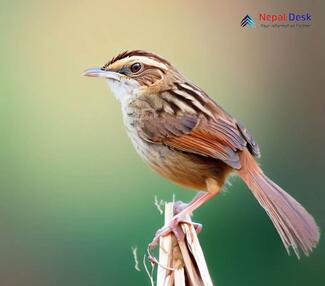Nepal is not only famous for its mighty Himalayan mountain ranges, but it is also home to a diverse array of flora and fauna. One such fascinating creature found in this captivating country is the Bristled Grassbird (Chaetornis striata), a species facing challenges that deserve our attention. This article will explore the fascinating world of the Bristled Grassbirds, focusing on their habitat, behavior, and present conservation status in Nepal.
A Rare Jewel Among the Grass: The Bristled Grassbird
The Bristled Grassbird, or Chaetornis striata, is a small, shy passerine bird that dwells in dense grasslands. They are mostly found in tall wet grasslands of South Asia, primarily in Nepal, India, and Bangladesh. With their cryptic coloration and secretive behavior, spotting these elusive birds can be quite challenging.
The Perfect Habitat: Where the Bristled Grassbird Thrive
In Nepal, the prime habitat for the Bristled Grassbird is found around the southern lowlands known as Terai. This region offers vast expanses of grasslands that provide an ideal home for these birds. The Bristled Grassbird favors tall grasses like Saccharum spontaneum and Phragmites karka as they offer ample cover for nesting and protection against predators.
A Glimpse into Their Behavior
The Bristled Grassbirds have unique vocalizations that sound similar to insect-like 'trills.' They utter these high-pitched calls from within the security of thick grasslands to communicate with mates or ward off intruders from their territory. During the breeding season, males can be observed perching on exposed branches to sing and attract females. Their diet mainly consists of insects like caterpillars and beetles but can also include additional vegetation.
Conservation Status: A Call for Action
The IUCN Red List ranks the Bristled Grassbird as a 'Vulnerable' species due to their drastically declining numbers. Their primary threat is habitat loss, with significant portions of their preferred grassland habitats being converted for agricultural or developmental purposes in Nepal and other parts of South Asia. Furthermore, very few protected areas in Nepal encompass the bird's preferred habitat, leaving them exposed to ongoing threats.
The Way Forward: Protecting the Bristled Grassbird
Efforts must be made to conserve the Bristled Grassbird population in Nepal, both to preserve this fascinating species and maintain overall biodiversity within the region. This includes increased research on their habits, distribution, and population dynamics. Additionally, expanding protected areas and promoting sustainable practices that avoid destroying tall grasslands can play a pivotal role in their conservation.
In conclusion, the Bristled Grassbird is an elusive gem hidden amidst Nepal's lush grasslands. As individuals intrigued by nature and wildlife enthusiasts alike, it becomes our responsibility to bring attention to these vulnerable creatures and promote efforts to ensure their survival in the captivating landscapes of Nepal for future generations to appreciate.




